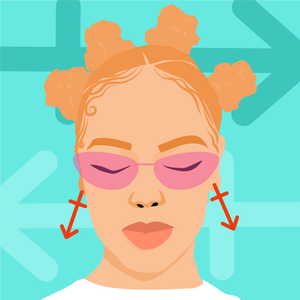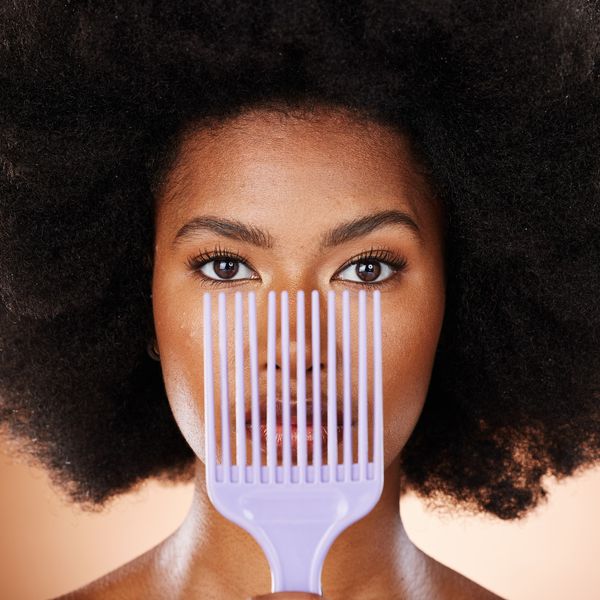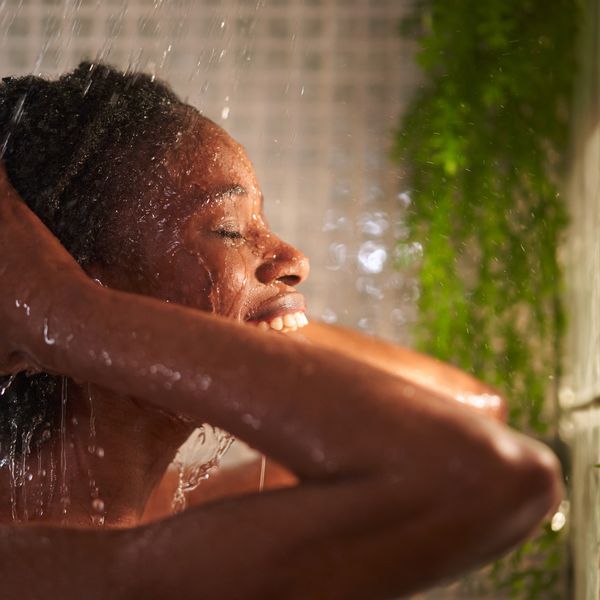
One day, while peeking into the social media world to see what was going on, I was tickled when I saw a sistah post a brief exchange between her and her cat.
After I chuckled, it crossed my mind that while a lot of us do indeed rock wigs, we hadn't done an article on how to care for our natural hair while wearing a wig. Whether you wear a wig like an accessory to your outfit, to grow your own hair out, or for any other reason, those fly looks are going to work against you if you're not making sure that your hair and scalp are handled with extreme care while you've got them on.
How to Care for Your Natural Hair Under Wigs
Now let me just give a heads up that, if you are a true wig connoisseur, then you already know that a topic like this really does deserve its own series. So, please just look at this as a CliffsNotes version; something that can, at least make you feel sure that, whenever you put a wig on, you can be confident that your hair is doing just fine until you take it back off again. And with that being said, let's get into the 12 tips that I've got, shall we?
1.Choose a Quality Wig
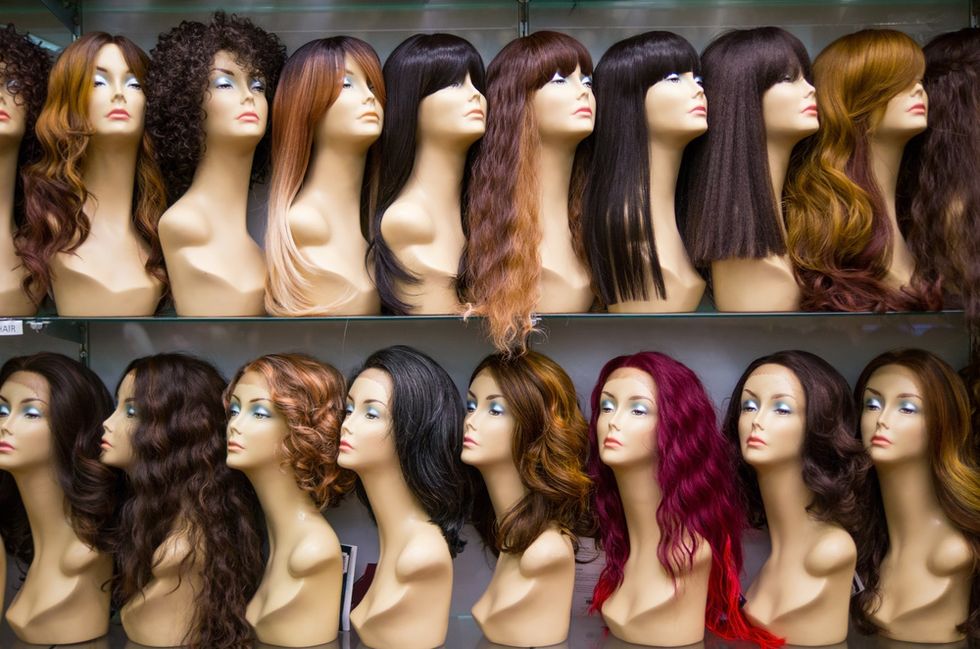
Before even learning how to take care of your natural hair, it's important that you put a quality wig on top of your head to begin with. As far as human hair wigs go, they do tend to look extremely natural however, they can also run you a few hundred dollars (at least). If money is tight, there are some synthetic ones that are much cheaper and are pretty impressive on the appearance tip too.
If you opt for a monofilament wig, they really do look like the hair from your wig is literally growing from your scalp while a hand-tied one is less dense and also looks more natural than machine-wefted or stitched wigs. Just make sure to keep in mind that the less money you spend on a synthetic wig, the less likely you'll be able to use heat-styling tools (because they will melt the hair). Also, please avoid wigs that have that crescent moon type of hairline; the more natural the hairline the better.
If you opt to go to an actual beauty supply store, the customer service agents there should be able to assist you with finding a wig that best fits your hair and personal style. But if you'd prefer to order a wig online, there are plenty of naturalista pros out in YouTube world who can totally help you out. Some videos worth checking out are located here, here, here, here, and here.
(Oh, and if you're looking for some real-looking affordable wigs, check out these videos here, here and here.)
2.Wash Your Hair and Scalp Regularly
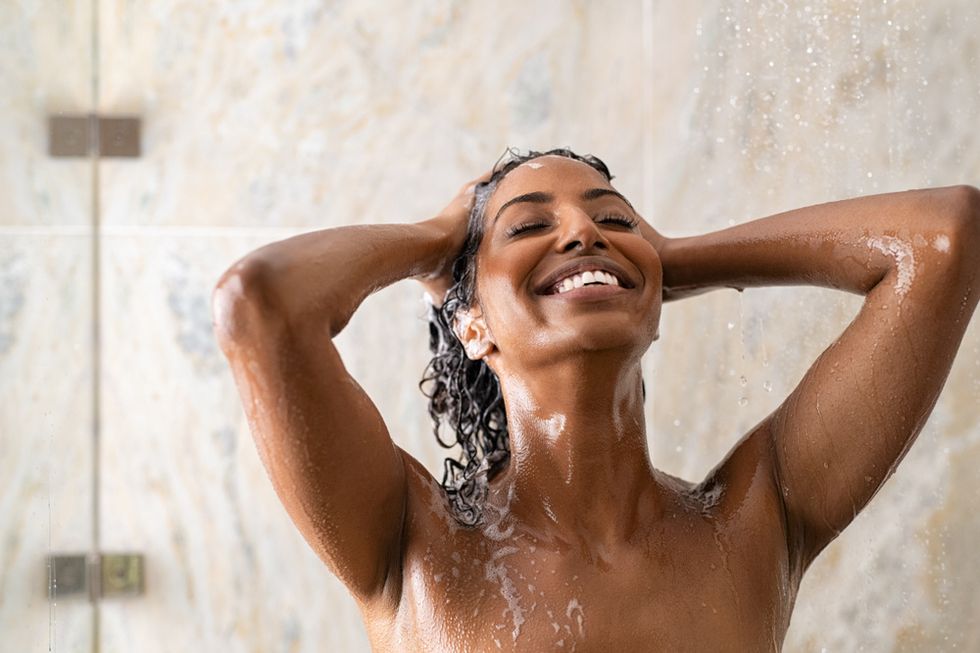
What if you had a hat on, all day, every day, for days or weeks on end? Wouldn't that make you want to wash your hair on a consistent basis? This is the mindset you need to have when it comes to how to care for your hair and scalp when you're constantly wearing a wig. Because it's natural for your scalp to sweat when you're wearing a wig, not only can that lead to clogged hair follicles, but the dampness can also lead to your hair and wig not smelling very great. Plus, bacteria can start to form too. This is why, words cannot express enough, that it's super important to shampoo your hair and scalp, no less than every 10-14 days.
Also, while we're here, what's the point in keeping your hair and scalp clean if your wig is gonna be nasty? Isn't that a lot like putting dirty underwear on a clean body? Exactly. So, when it comes to how often your wig needs to be washed, every 30 wears or 4-6 weeks is a pretty steadfast rule.
You can wash a human hair wig with regular shampoo but a synthetic one? Eh. Either go with a synthetic shampoo or even a fabric softener like Downy. For tips on how to properly wash your wig, check out this video here.
3.Super Deep Condition Your Tresses
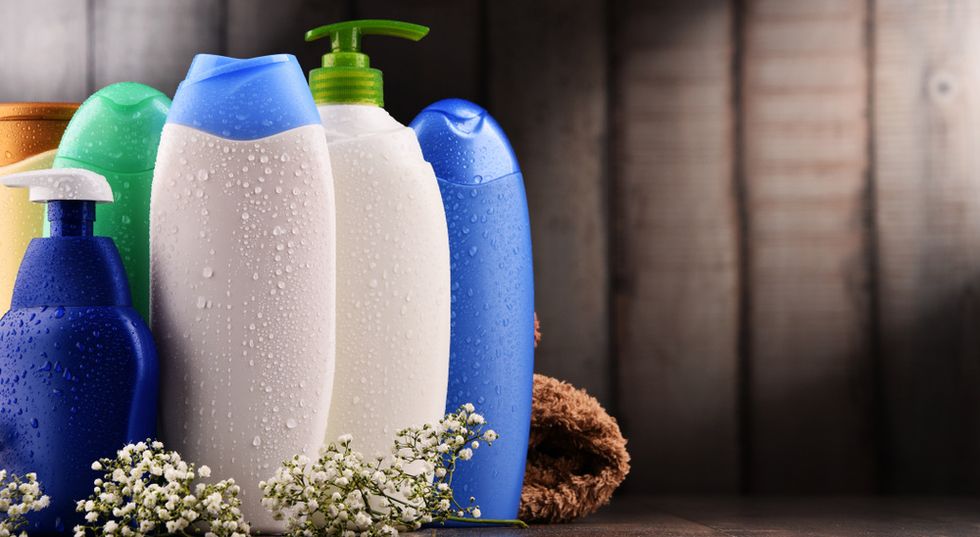
When I decided to get serious about length retention, it wasn't until I applied this particular tip that I started to make some real progress. So technically, this is a step that you should apply to your hair, no matter what. But when it comes to wig-wearing, you are going to REGRET IT (and yes, I am yelling that!) if you put yours on without deep conditioning your tresses first. Deep conditioning does everything from moisturizing your hair and adding some much-needed elasticity to it, to smoothing your cuticles and reducing your chances of getting split ends.
So, before you put your wig on, shampoo your hair, apply a deep conditioner, let it sit for no less than 30 minutes (a few hours is even better), and then rinse, dry and braid your hair before putting your wig on. It's a great way to keep extra moisture in your hair until your next wash day (which again, should be no less than 10 days later).
4.Oil Your Cornrows
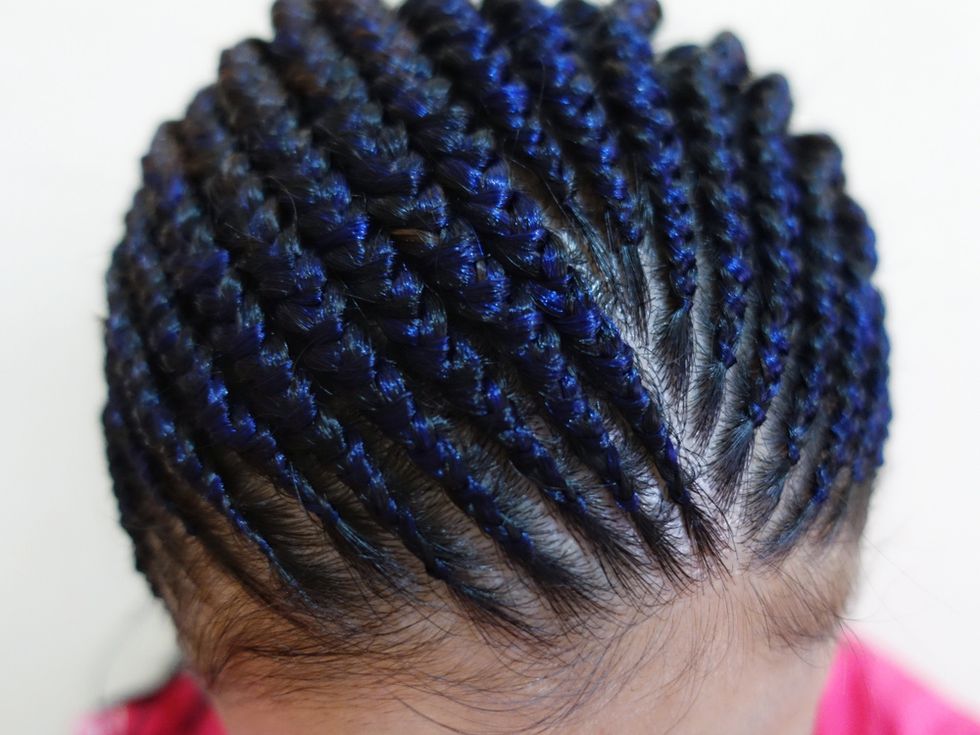
If you want your wig to lay down as flat as possible and your hair is past the TWA (Teeny Weeny Afro) stage, it's best that you put it into cornrows. Not only will that help your wig to fit really closely to your scalp, but it's also a great way to protect your ends too. Just make sure that before you braid your hair you apply a carrier oil like avocado, sweet almond, grapeseed, coconut, or jojoba to your hair to keep your braids extra protected and your scalp well moisturized. Also, you might want to apply a little bit onto your braids, every time you take off your wig as well. In fact, if you want to keep your natural hair and your wig smelling nice, you can even add a few drops of your favorite essential oil to your carrier oil of choice. Lavender, orange, and jasmine oil all smell amazing.
5."Baby" Your Hairline

There are many people who end up with bald edges because they skipped this point. There's no way around the fact that your edges (and nape) are probably the most fragile parts of your hair. And when you've got a wig on, the pressure from the wig can start to weigh down on your edge's follicles, potentially causing irreversible damage. That's why it's best to pull out some of your "baby hairs" before putting your wig on.
Not only that, but make sure to baby your hairline too by gently massaging it with Jamaican black castor oil (which is loaded with nutrients), not using alcohol-based edge control gel (that can dry your edges and nape out), and making sure that your old toothbrush is wet before applying product to it or brushing your edges down; otherwise, the roughness of the brush can wreak havoc on your baby hairs too. By the way, if you're looking for a good edge control, one that I enjoy is by Arcani Coil Care. It's a sistah-owned company and the product is long-lasting.
6.Watch the Straps and the Combs
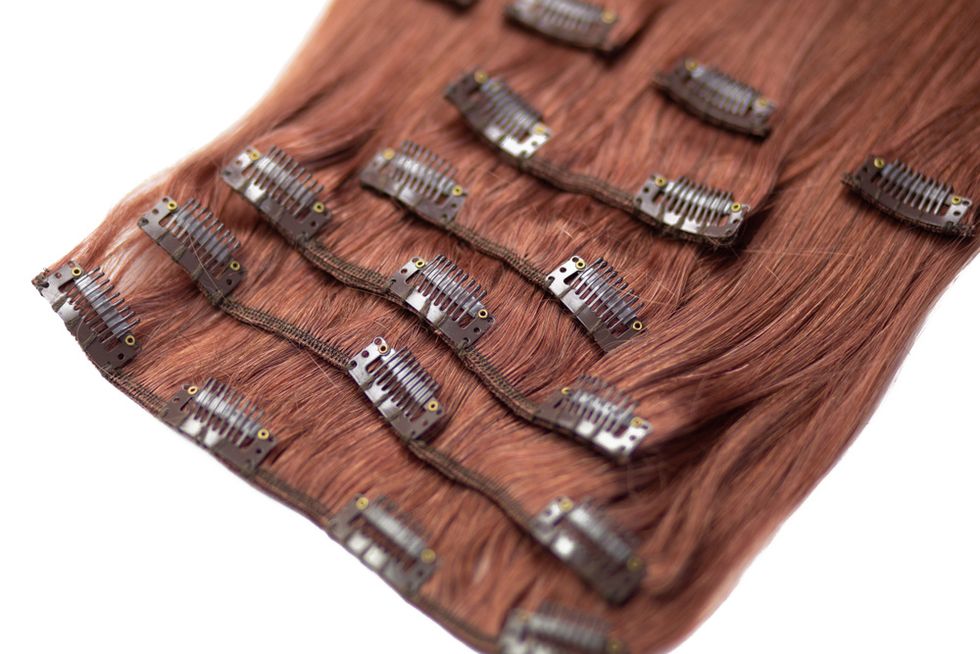
Two of the most underrated reasons why natural hair ends up being damaged, especially around the nape and edges, once we take our wigs off, is we don't adjust our wig straps or pay attention to how our combs fit on our head. While your wig straps need to be secure, make sure they aren't so tight that they cause friction on the most fragile parts of your hair (your hairline). As far as your wig combs go, make sure they have rounded ends and that you place them into your hair gently.
It's also important to not put them exactly in the same place every time (that can result in breakage and, eventually balding). Oh, and it's a good idea to massage the areas where your straps and combs were when you take your wig off. It will bring blood to your scalp and nourish your hair follicles so that those vulnerable areas won't cause your hair to become extremely vulnerable and damaged.
7.Take Your Wig Cap Off at Night
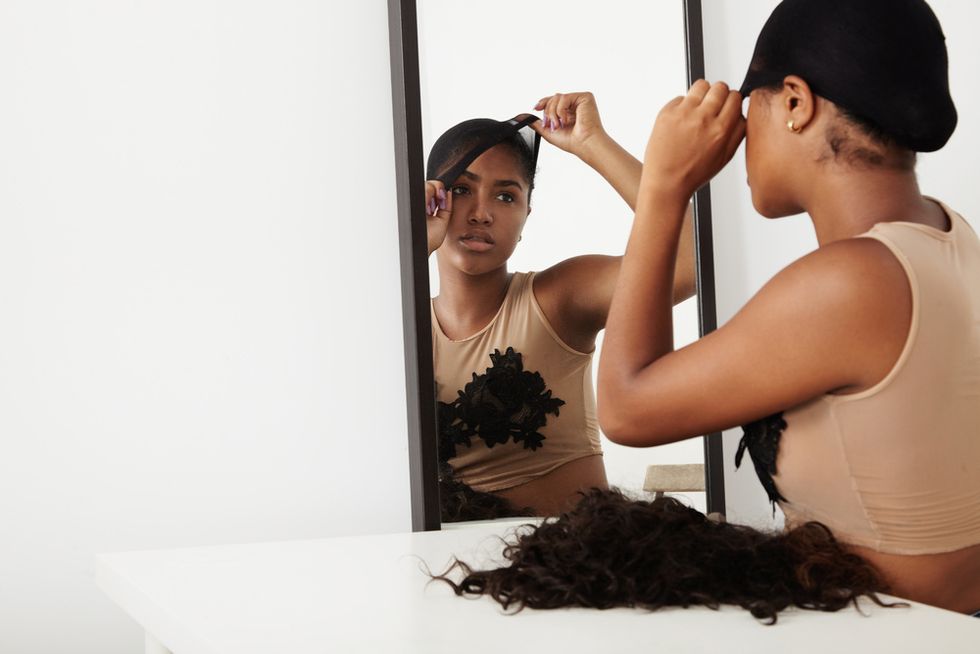
Whether or not you go with a wig cap that you choose yourself, you cut up an old pair of stockings or you opt to use the wig cap that came with your wig installation (because more and more wig companies are including those), it's imperative that you take off your wig cap every night. Remember that the reason why you wear them at all is so 1) your natural hair can get as flat as possible; 2) your natural hair can be protected from the potential snagging that could come from your wig and 3) so your wig looks as natural as it possibly can (which is why it's a good idea to go with a wig cap that is nude rather than black).
Sleeping with a wig cap on keeps your scalp from getting an opportunity to breathe and that is another way for bacteria to form and for our hair follicles to weaken over time.
8.Detox Your Scalp Once a Month

Earlier this year, I wrote an article for the site entitled, "Treat Your Scalp To A Little Bit Of Detoxing This Weekend." The reason why it's so important to detox your scalp is because it removes build-up and it can also rebalance the pH level of your scalp too. Your scalp is really going to need this if you're someone who wears a wig on a consistent basis, so make sure that a thorough scalp detox is a part of your monthly hair care routine.
9.Take Breaks

Too much of a good thing can easily turn into a bad thing when there is no balance and moderation. Wigs aren't exempt from this fact. So, definitely make sure to take a break from your wigs from time to time. If you wear the kind that you can take off every day, consider going a weekend without one. If you opt for the kind that you can keep on for 4-6 weeks easily, give your natural hair at least a couple of weeks before installing a new one. Air, Vitamin D (from the sun) and the lack of stress and pressure that can come from wigs is necessary if you want your hair to be healthy and to thrive.
10.Wash Lace Front Wigs When You Take It Out of the Package
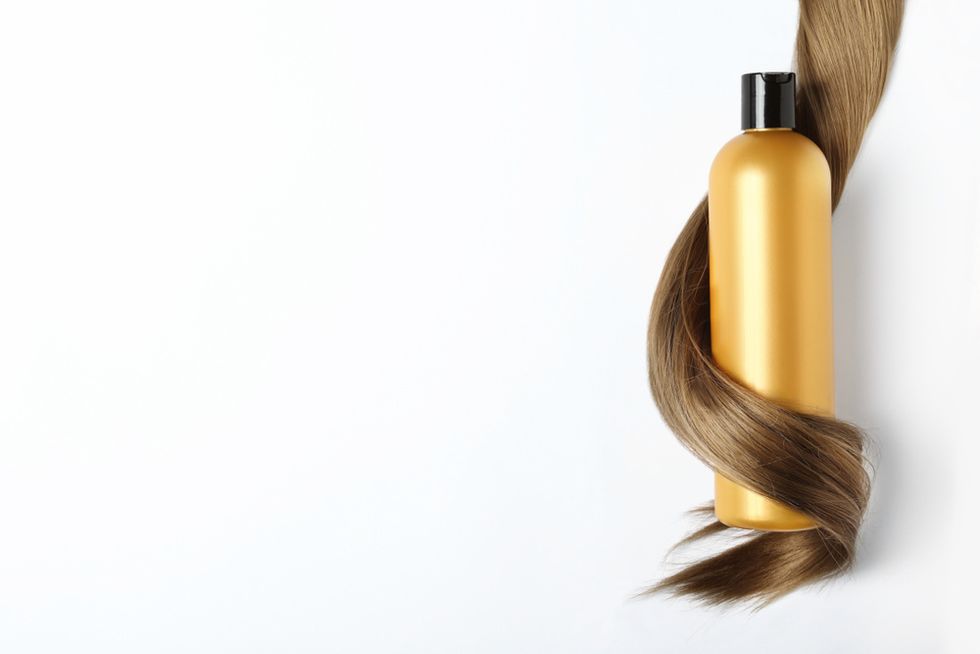
To tell you the truth, this particular tip should apply to any wig that you buy. The reason why you should wash your wig(s) before applying it/them is because you have no idea who handled the wig before you got it. Plus, not all wigs are packaged equally, and it would suck if there was dirt, debris, or…whatever in the wig; especially since you probably plan on wearing your wig for at least a couple of weeks at a time.
As far as how to properly wash a lace front, put a mild shampoo (remember that it needs to be synthetic or some type of fabric softener if it's made out of synthetic hair) into your sink or a basin of water. Put the wig into the water and allow it to soak for about 10 minutes. Use your hands to gently massage the wig (do not use a comb or brush). Then rinse the wig in lukewarm water, lightly dry it with a T-shirt, and then apply a spray that's made of half distilled water and half hair conditioner. Let that sit for about five minutes and thoroughly rinse it again with lukewarm water.
Use a T-shirt to gently wring the excess water from your wig and allow your wig to air dry on a wig stand with the weft of the wig exposed to the air. Once your wig is completely dry, you can then gently comb or use a wig brush.
11.For Lace Front Wigs, Use a Good Adhesive Brand

A bad lace front adhesive can be the absolute devil when it comes to damaging your natural hair. It's kind of a science class, trying to figure out which brand is best (especially if you're looking for a brand that is gentle on your hair but is also super long-lasting at the same time), but Oprah's site did an article on the best wig glues for lace fronts (you can check it out here) and this is another topic where the YouTube queens can definitely hold you do. Check out this video, this video and this video from some cool recommendations.
12.Wear Lace Fronts For No Longer Than 5-6 Weeks

I'll be the first one to say that some of these lace front wigs out here are absolutely mind-blowing when it comes to how real they look! But no matter how close to the real thing they might appear to be or how securely you're able to install yours, even the best of the best have an expiration date in the sense of how long you should wear them before it's time to take them off and take a break.
The standard? Somewhere around 5-6 weeks is when you need to remove it so that you can do all of the things that I just shared to your own hair and so that you can properly clean and condition your lace front too.
Again, while there is a lot more info that can be shared on wigs and wig maintenance, if you apply these suggestions, you can feel pretty confident that your own hair will thrive while you're out here being a baddie in your wig. And that truly is the best of both worlds when it comes to hairstyles—ain't it?
Featured image by Shutterstock
- I Got To Wear The Same Wig As Normani & Here's The Tea ... ›
- Cardi B Hair Stylist Cliff Vmir Schools Us On Wigs - xoNecole ... ›
- How To Avoid Heat Damage - xoNecole ›
- Bonita Locs Protective Style Inspiration - xoNecole ›
- How To Take Care Of Braids - xoNecole ›
- My Struggle With Alopecia: How I Learned To Find the Beauty In My Baldness - xoNecole ›
- The Best Braid Sprays To Moisturize Dry Itchy Scalp - xoNecole ›
- Protect Your Natural Hair Under a Wig | Hair Care ›
- How to Care for Your Natural Hair Under Wigs ›
- Natural Hair Under Wig Hair Care So Your Hair Stays Healthy! ›
- How To Maintain Your Hair Underneath A Wig ›
- How to Care for Braids and Scalp Underneath a Wig | Allure ›
- How To Care For Natural Hair Under A Wig: Best Products ›
Your December 2025 Monthly Horoscopes Are All About Surrender & Alignment
December is about letting go. We end the year with the need for more peace, reflection, and rejuvenation, and that is exactly what December is providing for us. The Sun is in Sagittarius, and anything is possible. This is the month to believe in that and to know that the universe is supporting you. With a Supermoon in Gemini as we begin the month as well, we have an opportunity to gain the closure we have been looking for this year and to wrap up old projects, ideas, and communication breakthroughs.
This is the month to make your peace the priority and let go of trying to control the way the tides are turning. Trust in your new beginning, and give yourself time to prepare for it this month.
A big part of the clarity that is coming through this month is due to Neptune going direct in Pisces on December 10, after being retrograde here since July. With Neptune now direct, we are able to see our inspiration and creativity a little more clearly, providing the perfect energy for dreams and manifestation to be built upon. The smoke is clearing, and it’s up to you to decide what you want to do with this newfound clarity that this transit is bringing. Mercury also moves back into Sagittarius on December 11, which is great for communication and clarity, and the adventures you were trying to see through at the beginning of November come around for you again with greater purpose and support.
On December 15, Mars enters Capricorn until the end of January 2026, and this is the extra push we need to make important changes and to be on the path towards greater abundance, stability, and prosperity. Mars in Capricorn takes care of business, and we have extra energy at our disposal during this time to do so. This transit is an ideal time to focus on your career or financial goals for next year and to start putting some of these plans into motion now. A few days later, we have the New Moon of the month, which will be in Sagittarius on December 19, and this is the perfect New Moon to manifest.
The energy is high, magic is in the air, and it’s all about moving forward with the new beginnings that are inspiring you and bringing you joy to think about right now.
Capricorn Season officially begins on December 21, and this earth sign energy is how we heal, gain closure, and build new foundations in our world. With Venus also moving into a Capricorn a few days later, there is something about peace, prosperity, and security that we are gaining in life and in love as we close out the year, and this is what we need right now. This month is about reflecting on what was, letting go of old hurt, and renewing. December is an ending and a new beginning in one, and there is magic in this space to be created.
Read for your sun and rising sign below to see what December 2025 has in store for you.
 AriesKyra Jay for xoNecole
AriesKyra Jay for xoNecoleARIES
December is a full-circle moment for you, Aries. You are seeing the gifts in your world and have a lot of gratitude for the way things have come about for you as of late. There are culminations in your world that are providing you with more abundance, stability, and community, and you are exactly where you are meant to be this month. With the Sun in a fellow fire sign and in your 9th house of travel for most of the month, December is a good time to get out of your comfort zone, explore the world around you, and get your body moving.
Mars, your ruling planet, also makes a change and moves into Capricorn on December 15, which will fuel your inspiration and power in your career space. You are making a lot of professional progress as we close out the year; however, make sure to be more mindful of your competitive drive right now. The New Moon on December 19 is the perfect opportunity for you to create some new plans and goals when it comes to traveling, education, and where you want to gain some new inspiration in your world. Overall, this is a month of things coming together for you serendipitously.
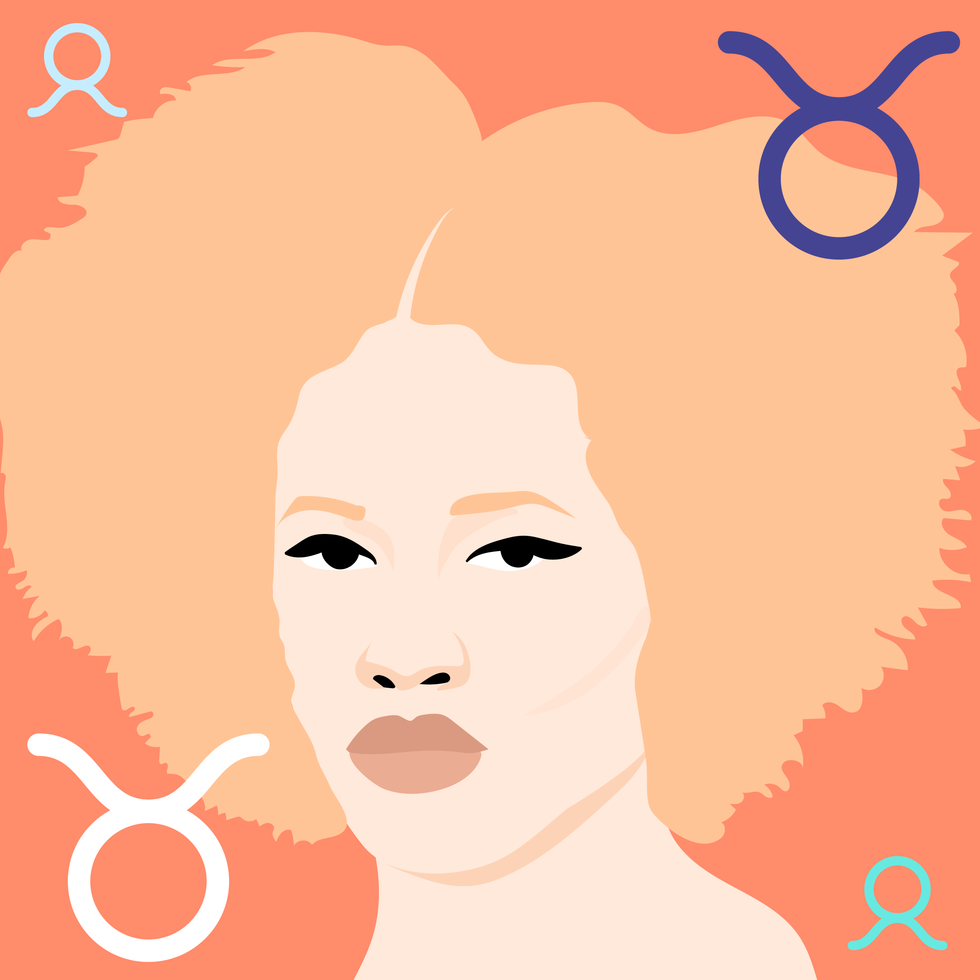 TaurusKyra Jay for xoNecole
TaurusKyra Jay for xoNecoleTAURUS
December is about trusting your intuition, Taurus. You have a lot on your mind this month, and it’s best to delegate, communicate, and allow yourself some relief by opening up to someone and not feeling like you have to hold everything in. As we begin the month, we have a Supermoon in Gemini happening in your house of income, and the plans and projects you have been building here come to fruition for you now. This is the time to gain clarity on your financial world and to take a look at what spending habits you want to let go of here as well.
With Venus in your 8th house of shared resources for most of the month, you are doing a cleanse on your commitments, partnerships, and business ventures. You are taking a look at what you want to dedicate yourself to in the future, and what commitments you may need to let go of now in order to be in the space you truly want to be, both financially and within some of your relationship dynamics. Before we end the month, we have a New Moon in this same area of your chart, and it’s time to look at the opportunities that are presenting themselves and to trust your internal guidance system to lead you forward.
 GeminiKyra Jay for xoNecole
GeminiKyra Jay for xoNecoleGEMINI
You are moving forward fearlessly this month, Gemini. December is your month of love, passion, and dignity, and you are owning the light that you shine. We begin the month with the last Supermoon of the year, happening in your sign, and you are stepping up to the plate. You are showing up, owning how much you have grown this year, and allowing yourself to heal while also acknowledging that you have done your best and you deserve to have fun in the midst of the changes you are creating.
Mercury, your ruling planet, is officially out of retrograde, and you can use this energy to the fullest potential now. With Mercury in your 7th house of love, it’s time to speak from the heart and to talk about the things that matter and that are inspiring you right now to your loved ones. You never know what kind of epiphanies you may have when you open up the conversation to others. Before the month ends, you have a New Moon in this same love area of your chart, and this New Moon is all about manifesting romance, commitment, and abundance in your world.
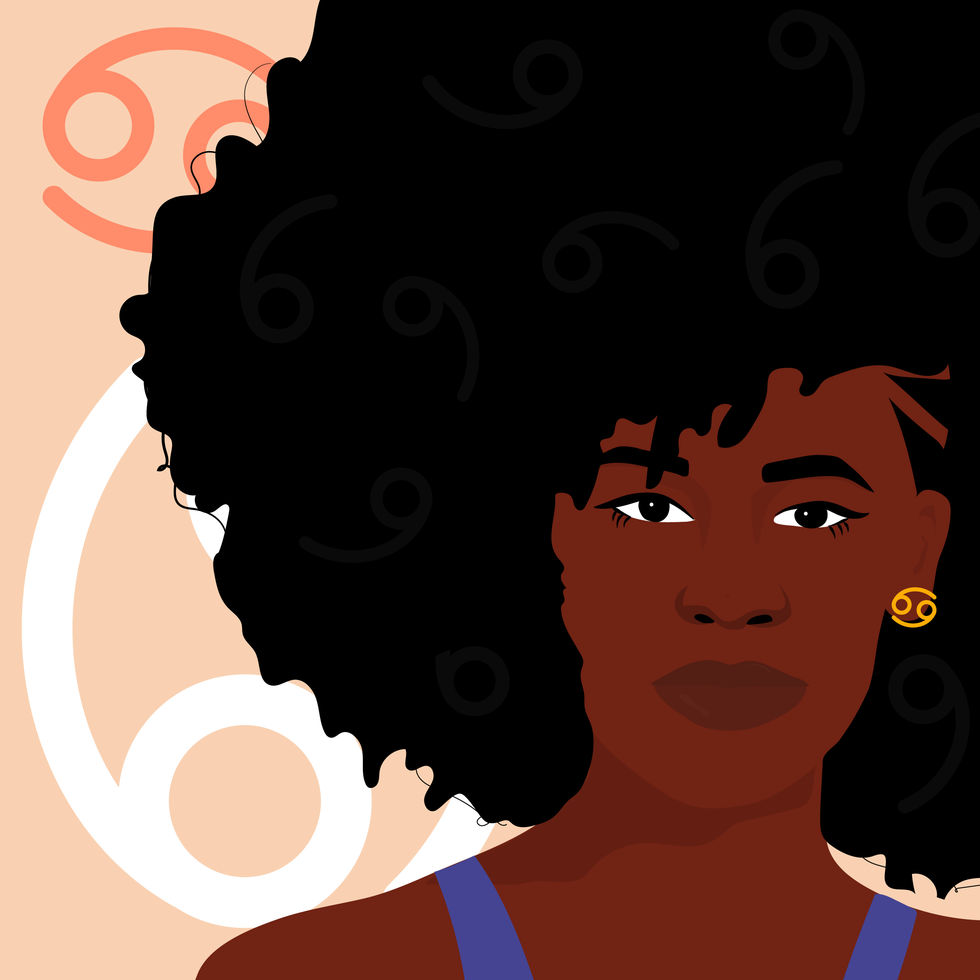 CancerKyra Jay for xoNecole
CancerKyra Jay for xoNecoleCANCER
December is an opening for more love, more joy, and more freedom in your life, Cancer. You have come to a place where you hold so much gratitude in your heart for where you are today and where your heart is shining, and things come together for you with more ease right now. With the Sun in your 6th house of health, work, and daily routines for most of the month, you are getting your ducks in a row while also putting more energy and effort into taking care of yourself, your priorities, and your well-being. This month surprises you in many ways, and it’s because you are showing up.
Mars and Venus both move into your house of love, relationships, marriage, and abundance this month, and you are making strides in your love life. You have both of these opposing forces on your side and are being recognized for the love you are while also receiving the love you want. This month, overall, is about focusing more on the positives in your world and letting your heart have its joy. Before December comes to an end, there is a New Moon in Sagittarius, and this is the perfect opportunity to create the plans you want to see through next year, especially when it comes to your work life, colleagues, business ventures, and health.
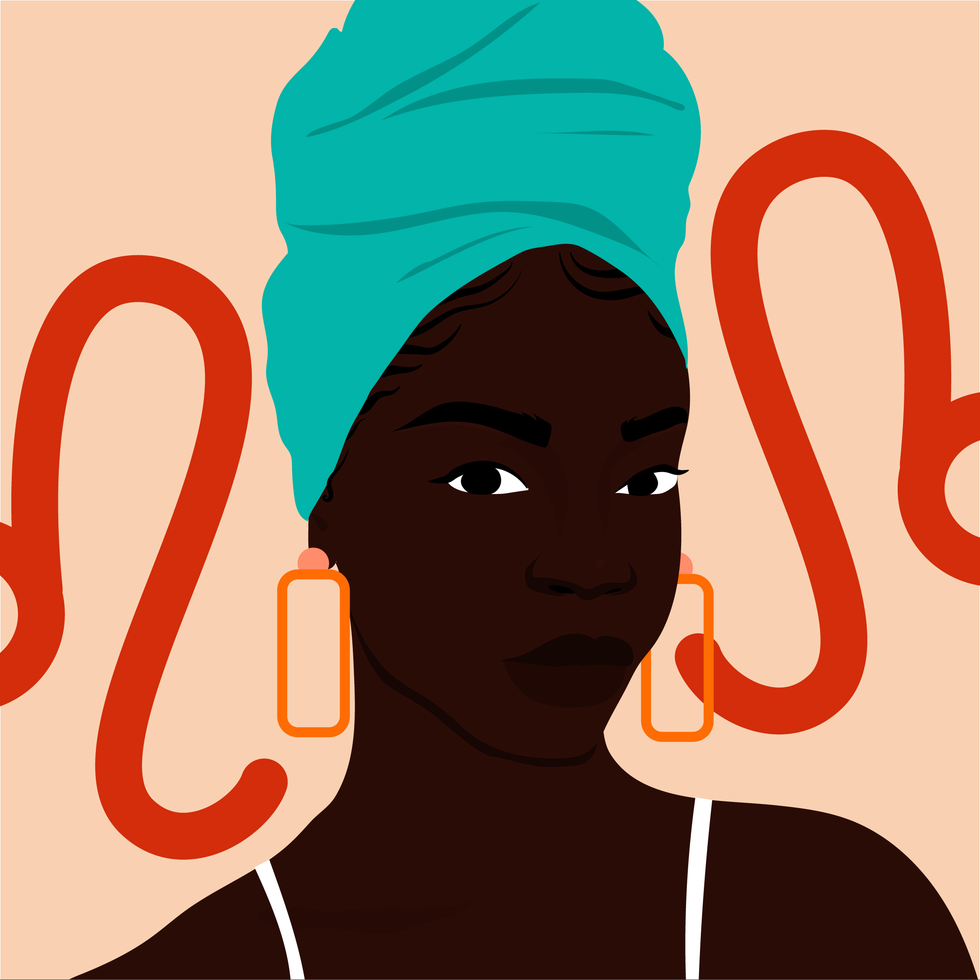 LeoKyra Jay for xoNecole
LeoKyra Jay for xoNecoleLEO
The scales of karma are balancing, and they are balancing in your favor this month, Leo. December is your month of truth, and of seeing it clearly in your world. The Sun is in your house of romance, pleasure, and happiness for most of the month, and it’s time to relax, be in the present moment, and allow what is meant to be, to be. With a Supermoon in your 11th house of manifestation as December begins, this is a powerful month for seeing your dreams come to fruition, and for feeling like the intentions you have set this year are finally here for you now.
Mars also moves into your 6th house mid-month, and this is the perfect energy to have to move into the new year. You have extra energy at your disposal right now and are feeling fearless with what is possible for you and your daily routine. Before the month ends, we also have a New Moon in a fellow fire sign, Sagittarius, and this is a breakthrough moment for you and your heart. December, overall, wants to show you how loved and supported you are and will be doing so in magical, unexpected, and concrete ways.
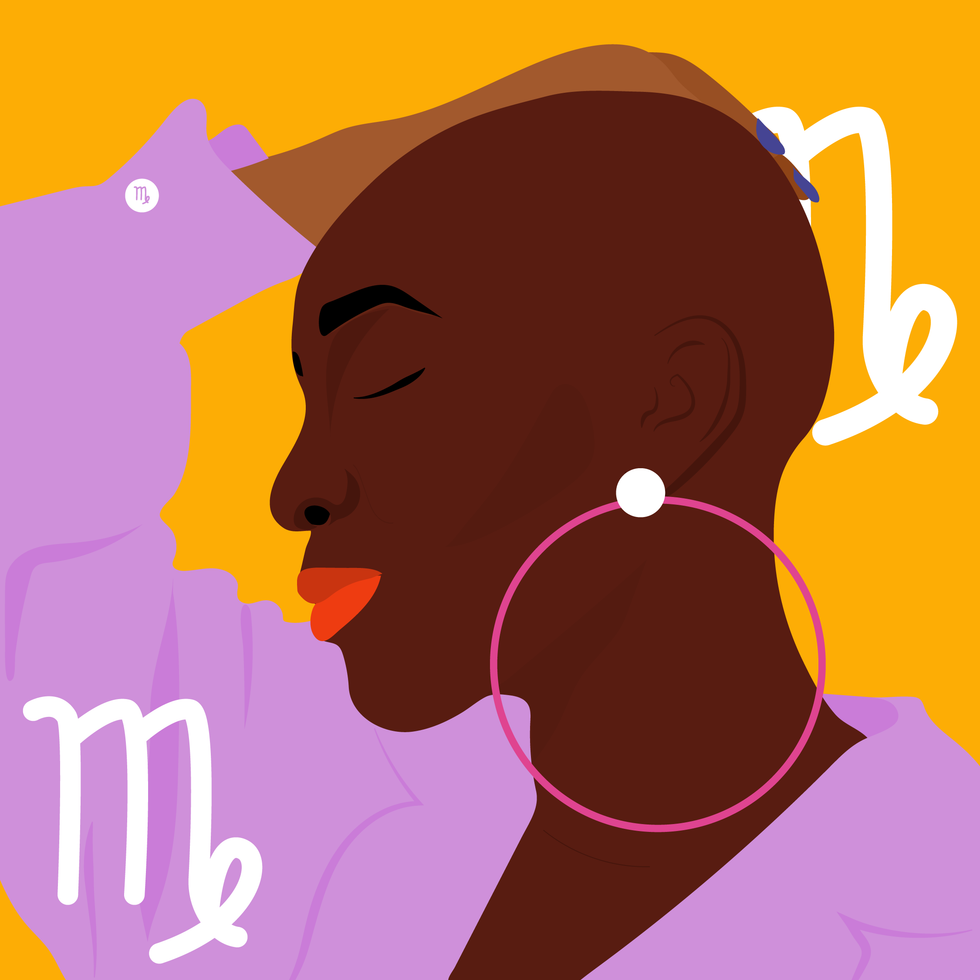 VirgoKyra Jay for xoNecole
VirgoKyra Jay for xoNecoleVIRGO
December is a month of victory, Virgo. You are showing up and experiencing some new successes in your world that move you forward on your path in life. With a Supermoon in your 10th house of career as we begin the month, the effort and intentions you have made this year come into full bloom, and you are being recognized for who you are and the good work you have done. This month is all about showing up and allowing yourself to be seen and loved, knowing that you deserve the support and opportunities you are receiving.
Mars moves into Capricorn on December 15, which brings the passion and excitement into your love life, hobbies, and little pleasures in life that light you up. You want to have fun this month and are going to be walking into the new year with this fearless, happy, and spontaneous energy within you. Before the month ends, Venus also enters Capricorn, and in this same area of your chart, you have a lot to look forward to and believe in right now. Overall, December wants you to be happy and will be doing everything possible to make that happen for you. This is your month to shine, Virgo.
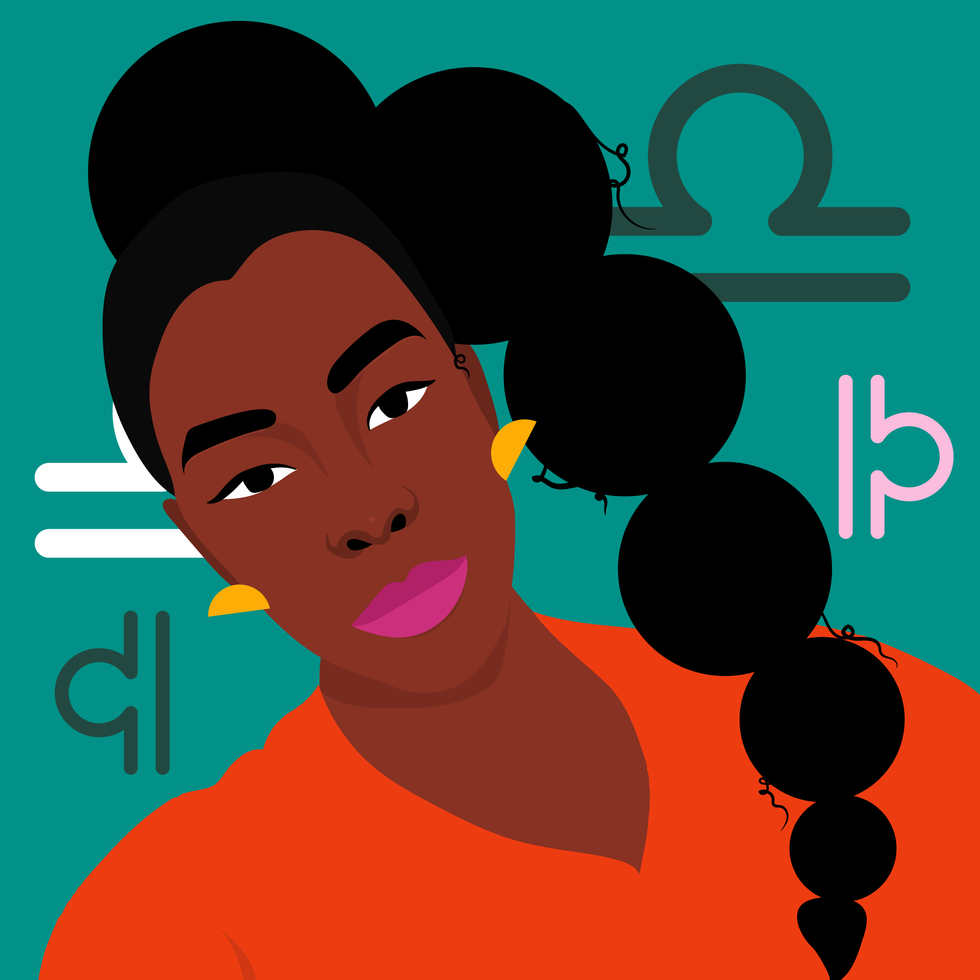 LibraKyra Jay for xoNecole
LibraKyra Jay for xoNecoleLIBRA
December is a month of opportunity for you, Libra. New doors open, and you are financially making breakthroughs this month because of it. December begins with a Supermoon in your 9th house, and you are getting a clearer view of where you have been making strides in your life and how it has all brought you here to this present moment of freedom. This month is showing you what happens when you are fearless with your purpose and when you believe in yourself and what you are worthy of.
Moving further into December, Mars moves into your 4th house of home and family mid-month, and you are closing out the year in your safe spaces. You are spending more time with your loved ones and taking the time to quiet your mind and listen to what your heart has been telling you. Before the month ends, we have a New Moon in Sagittarius, happening in an area of your life that deals with communication. This is a great time for getting the answers you have been looking for and for feeling more clear-headed and confident about the decisions you are making as you move into the new year.
 ScorpioKyra Jay for xoNecole
ScorpioKyra Jay for xoNecoleSCORPIO
Patience is a virtue this month, Scorpio. December is all about remaining patient and vigilant with what you are creating in your world, and knowing that the universe has your back. It’s time to be reminded of the power of hope, and this month is an opening to greater clarity in your life. There is a lot of energy in your financial zones right now, and this is providing you with new opportunities and new insight; however, the speed at which things come about for you may feel daunting. Keep your head up and eyes focused on what you want and know that you are more than worthy of receiving it.
With Mercury in your 2nd house of income this month, December is a good time to plant new seeds and to think about where you want to be financially a month from now or even a year. This month is asking you to think bigger and to think more long-term so that you can set the appropriate plans into motion now. We also have a New Moon in your house of income before the month ends, and this is when you will see more of your dreams come to fruition in this area of your life, and have more opportunities to build. Overall, December will be teaching you a lot, Scorpio.
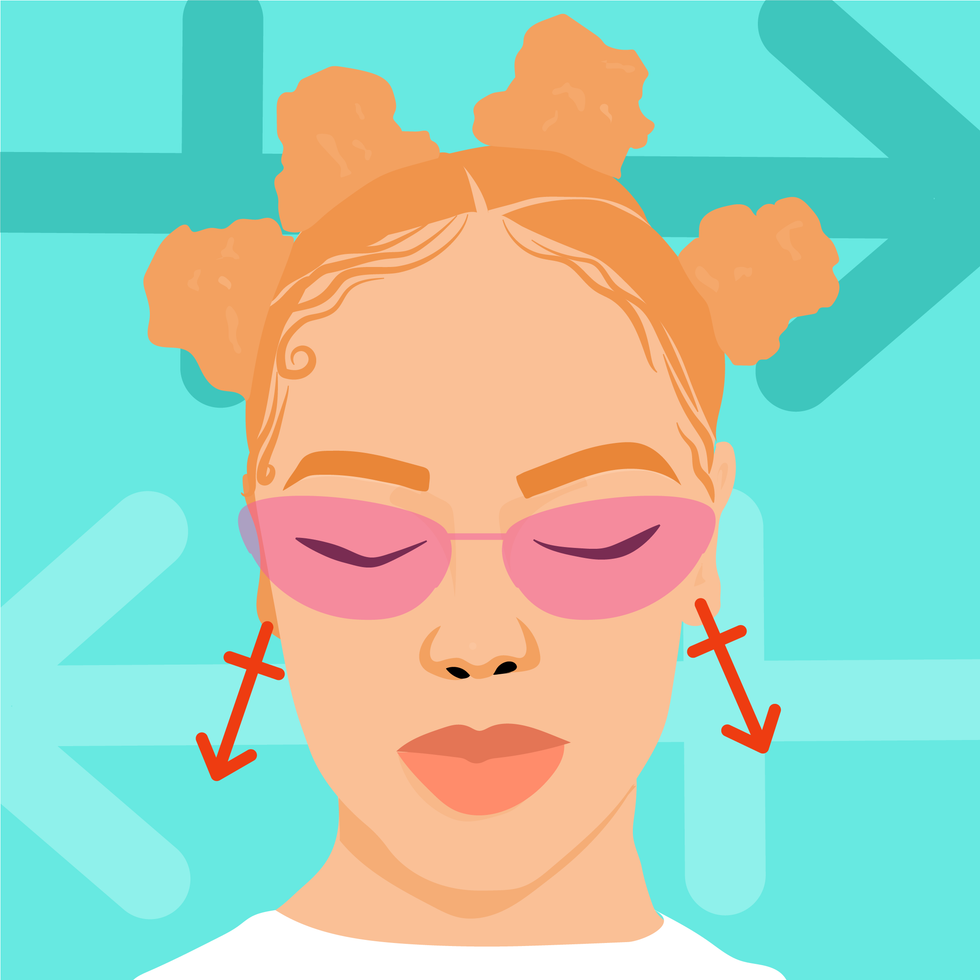 SagittariusKyra Jay for xoNecole
SagittariusKyra Jay for xoNecoleSAGITTARIUS
Sagittarius Season is here, and there is a lot in store for you this month, Sag. December is all about what you are dedicating yourself to. It’s about setting your intentions and putting the work in to back up your dreams, and about getting things in order so that when the new beginnings come, you are ready for them. The Sun and Venus are in your sign for most of this month, and there are a lot of eyes on you right now. You have the potential to create a new beginning for yourself, and it’s time to invest in yourself, your love life, and your dreams.
Mercury moves into Sagittarius on December 11, and this is giving you another opportunity to see through some of the plans that you had initiated in November. Mercury was retrograde in your sign last month, and there may have been some disruptions to your vision and plans for the future, and now this energy is turning around for you. Before the month ends, we also have a New Moon in Sagittarius, and you are walking through new doors fearlessly. You are catching others by surprise by your growth this month, and you are thinking a lot about your purpose, future, and plans for the new year.
 CapricornKyra Jay for xoNecole
CapricornKyra Jay for xoNecoleCAPRICORN
December is all about the vision, Capricorn. You are moving through a lot of changes and transformations this month, yet they are giving you a chance at a new beginning in the process. You are focused more on the future and what goals you want to manifest for yourself right now, and are ready to let go of what hasn’t been working for you. With the Sun in your 12th house of closure for most of December, this is your time for healing, but remember, healing doesn’t have to be isolating or boring; you can thrive while you renew, and you are this month.
Mid-month, the excitement picks up for you, and you are feeling more energized than you have in a while. Mars moves into Capricorn until the end of January 2026, and you are being proactive with your goals, intentions, and passions. You are a force to be reckoned with this month, and you are making things happen for yourself with confidence. Capricorn Season officially begins on December 21 this year, and this is definitely speeding up your healing process. You are breaking free from what was, and with Venus also moving into Capricorn before the month ends, you are leaving this year in high spirits and with love opening a new door for you.
 AquariusKyra Jay for xoNecole
AquariusKyra Jay for xoNecoleAQUARIUS
December is all about community, creativity, and manifestation, Aquarius. This is the month to work together with others to help bring your dreams to life. You are in a space of inspiration, empowerment, and beauty, and are creating more of this energy around you and in your world. Look out for what support comes your way this month and know that you don’t have to do everything alone to succeed. With the Sun in your 11th house of manifestation and friendship, your intentions are coming to fruition, and it’s time to celebrate with the people you love and to own how far you have come this year.
On December 19, we have a New Moon in Sagittarius, lighting up your life in all of the best ways possible. This is your New Moon of freedom, victory, and magic, and you are seeing new beginnings appear that you were once just hoping for. Before the month comes to an end, Venus moves into your 12th house of closure, and after an active and successful month, you are ready to relax, heal, and give your heart some of the attention it has been asking for. You are moving into the new year with the need to release and renew what hasn’t been working in your relationships, and you are finally ready to.
 PiscesKyra Jay for xoNecole
PiscesKyra Jay for xoNecolePISCES
December is a big month for you, Pisces. You are making some huge accomplishments this month, and are feeling like everything you have been through this year has been worth it for these moments that are coming to fruition for you now. The Sun is in your 10th house of career and reputation for most of the month, and this is where a lot of your focus is right now. You are claiming your successes and putting yourself out there in ways that not only serve you, but that inspire others as well.
Neptune officially goes direct on December 10, after being retrograde in your sign since July, and you are finally seeing things a little more clearly. You are feeling renewed inspiration and passion in your life, and your intuition is your strongest asset right now. Before December comes to an end, we also have a New Moon in your 10th house of career, and what happens now not only changes things for you in the present, but it also opens new doors and what is possible for you in the new year as well. Overall, you are on top of your game this month and are owning the joy and empowerment you feel.
Featured image by Kyra Jay for xoNecole
You're Over Him. Should You Wait Until After The Holidays To Say It?
When a client told me that she was seriously considering ending her relationship of 10 months before Christmas, I wasn’t surprised. That’s not a sneak diss on what she has going on with her man or anything; it’s just that I know that the holiday season (the month of December, more specifically) is a very popular time for folks to call things off. Between the pressure of bringing people around family and the urge to start off the new year with a clean slate — yeah, it makes sense.
At the same time, though, I do think that there is something to be said for ending things well — and when it comes to a break-up? During this time of the year? Before you make that official move, I just want to make sure that you’ve thought a few things through.
Things like what exactly? So glad that you asked.
How Serious Is the Relationship?
 Giphy
GiphyOkay, so if you’ve never heard of the “10-date rule” before, it’s basically the belief that after 10 consecutive dates with someone, it’s time to come to the conclusion that you are officially in a relationship with them. Personally, I have lived, observed and counseled enough people to say that when it comes to knowing where you stand with another person, you shouldn’t assume one damn thing — you should 1000 percent communicate your thoughts and listen to theirs in return.
That said, it is a bit different (wouldn’t you say?) if you’ve been out on a couple of dates with someone vs. if you’ve been with them for almost a year. So yeah, the first thing to ponder is how serious the dynamic is. Because honestly, if things are new and fairly casual, I don’t see how ending things, whether it’s the holiday season or not, is going to matter much — one way or another.
Remember, the holidays tend to be a very emotional time; however, if there isn’t a huge emotional investment going on, I don’t think anyone in a casual situation is going to look back and think that you are a villain (or Grinch), just because you’d prefer not to go on a third date with them. Good lord.
Next point.
Do You Want to Slow Down or End Things Entirely?
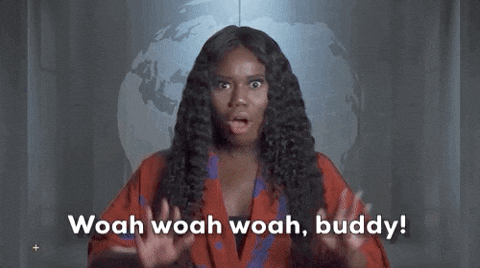 Giphy
GiphyAre you totally over him or is it more like there are some things about the situation that you want to step back and ponder before making any major decisions about the future? If the answer is “B,” I recommend talking it over ASAP; especially if the two of you have been seeing each other for a while at this point. I say this because, whether you all are at the “meet the family” (or have already met the family) stage or not, when people are in a relationship, they tend to factor one another into their holiday plans — and it’s hella inconsiderate to not take this into account when it comes to the guy who you are seeing.
That said, I will say this: It’s mighty interesting that you are choosing this time of the year for this type of relational self-reflection — so, while you’re on this break, think about what it symbolizes.
For instance, are you slowing things down right now because you’re not sure if you want to go into a new year with him or are you doing it because spending the holidays together tends to represent that a relationship is far deeper than you want yours to be right now? Because really, you could’ve gone with the summertime (for example) not the holiday season to make this type of move…so, if your “pump the brakes” time is now, chances are, there is some subconscious subtext going on that you really should get to the root of.
Actual Holidays Are a DEFINITE No-No
 Giphy
GiphyYou would think that this wouldn’t need to be said yet since I once experienced a guy who decided to be a complete a*shole on my birthday some years back — yeah, let’s address it. Isn’t it interesting that one study revealed that during the first week of December, searches for how to break-up with someone go up by a whopping 60 percent? Then, if you add to that the fact that the holidays can sometimes be pretty stressful — well, while most folks with a heart and a conscience wouldn’t dream of breaking up with someone on an actual holiday, sometimes the pressure of everything can create the perfect storm for it to happen anyway.
That said, a super-duper throwback song by Neil Sedaka entitled, “Breaking Up Is Hard to Do” — and it absolutely is. Know what makes it worse: It happening on a holiday, so that every time the day rolls around, it’s bittersweet because you remember that someone broke up with you then.
Listen, just because you may not love or even like someone (in that way) anymore, that doesn’t mean that you shouldn’t treat them with some common decency and respect. Besides, don’t you also want your own Thanksgiving, Christmas Eve, Christmas Day, New Year’s Eve and New Year’s Day to be as unscathed and drama-less as possible?
Whatever you’re gonna do, you’re grown, chile. If you want my advice, though — put good energy into your future holiday seasons and avoid breaking up (or even having deep decisions) on actual holidays.
Definitely Keep the Golden Rule in Mind
 Giphy
GiphyProbably, until the end of time, there are going to be debates about whether karma is real (in the sense of it being scientifically proven). While quite a bit of data says that it isn’t and that it tends to be adapted and promoted by certain faiths more than anything — if you do believe that you reap what you sow (Galatians 6:7-8), at the end of the day, that is pretty much what karma is all about and, as I oftentimes say, karma (or sowing and reaping) don’t have expiration dates. In other words, what you have said and done can manifest in ways and at times that you never saw coming. A cautionary tale, indeed.
So yeah — even if you’ve been with ole’ boy for a while now, you’ve tried to make it work and you just don’t see a future for the two of you anymore, however you decide to end it, definitely keep the golden rule of doing unto others as you would want them to do unto you in mind.
Be as kind as you are honest. Be as empathetic (putting yourself in his shoes) as much as you possibly can. Avoid gaslighting him about how he feels about your decision. Be clear about how you’d like things to be moving forward (for instance, if you actually DON’T want to be friends afterwards, there’s no need to say it). And try not to do anything that will make him feel used — like waiting until after receiving a Christmas gift to end it (you’d be amazed by how many people do exactly that. SMDH).
The thing about break-ups is, live long enough, and you’re probably going to be on the giving and receiving end of one. So, even if you’re not really emotionally invested in your relationship anymore, be kind to your future self and be as respectful as possible throughout your…relational transition. Because even if you don’t feel like he deserves it, your feelings up the road, with someone else who may do the same thing to you…absolutely do.
Timing Is Everything
 Giphy
GiphyA bishop by the name of Fulton J. Sheen once said, “Patience is power. Patience is not an absence of action; rather it is ‘timing’ it waits on the right time to act, for the right principles and in the right way.” And while it might seem really challenging to figure out when the RIGHT time to break up with someone is — “right” is about using good judgment, right is about conforming to certain principles (like integrity and fairness), right is about doing things in order. Now with that in mind, is the RIGHT TIMING now or should it be later?
Only you can really answer that yet what I will say is if your mind, body and spirit aren’t on the same page — figure out why before making any moves. Oh, and if it’s simply about fear — girl, whether it’s November 30, December 9 or January 14…break-ups are always going to be uncomfortable. It’s about knowing what’s best for you and then ending things in a way that is as respectful, timing-wise, as possible (again, due to the whole karma thing).
____
‘Tis the season and sometimes “out with the old” means leaving a relationship behind. Just make sure that you move with wisdom and discernment and not hypersensitivity and knee-jerking.
That way, you can look back on every holiday season with as little regret as possible.
Due to how you handled things. Including a (potential) break-up.
Let’s make things inbox official! Sign up for the xoNecole newsletter for love, wellness, career, and exclusive content delivered straight to your inbox.
Featured image by Shutterstock


